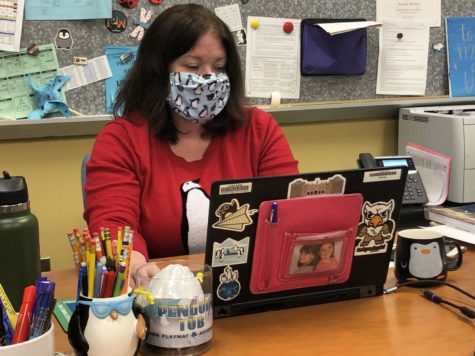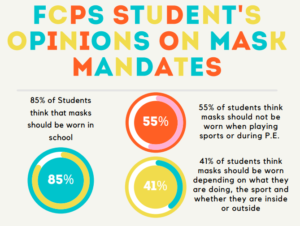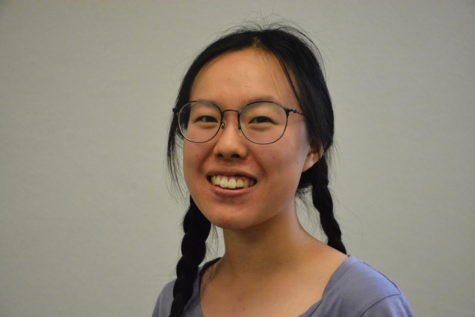Masked beauty: face coverage heightens attractiveness
Because of their various colors and designs, surgical masks have become the choice of many students.
January 31, 2022
As a new year coping with COVID-19 begins, smiling with one’s eyes continues to be popular. However, preventing the transmission of diseases is not the only benefit of masks. With students returning to school buildings fully masked, many have noticed an interesting phenomenon—their friends seem to look slightly different in their masks, if not better.
“It depends on [who it is], but some people just look way better with masks,” sophomore Natalie Nauss said. “[Maybe it’s because we] get higher expectations.”
According to a survey conducted by Royal and reported in PRNewswire, 88% of adult women in the U.S. find men who wear masks in public more attractive than those who do not.
“[The] majority of people have very pretty eyes, and it can ultimately be misleading,” senior James Sun said.
This seemingly magical effect is supported by science. As explained by Psychology Today, when people see someone in a mask, they use amodal completion—the ability to perceive the complete image of a partly obstructed object—to create a mental picture of the person’s face by filling in the parts they cannot see.
The information people’s brains provide often reflect their expectations of other people’s appearances. Reality may catch people off guard if it does not correspond with one’s imagination.
Out of the 100 responders polled by The Purple Tide on Jan 19 and Jan 26 in class and during lunchtime, 98% reported that they were surprised after seeing people unmasked for the first time.
“There are some people [whose face] was so different [from] what I thought [it would be],” sophomore Thea Brown Hargrove said. “I subconsciously imagined [their] mouth and nose in a particular way, [but sometimes they] ended up being different [and] I was completely off base.”

Masks also influence how students treat their personal image. Many try to integrate masks into their daily fashion by buying different colored ones and matching them with their outfits. For those who wear makeup to school, some students now only focus on the parts that are not covered by the mask.
“I only put on mascara,” Brown Hargrove said. “But I want to get more into makeup [by putting] something on my lips, but I can’t because it will get messed up [by the mask].”
Wearing masks was already developing into a trend before the pandemic in some Asian countries like Japan, Korea and China. Although the face mask culture was originated to prevent inhaling microdust, many young people now view it as a social firewall that keeps away attention and judgments, according to VOANews. Even in countries without such cultural backgrounds, many feel that covering their faces helps relieve people’s sense of insecurity toward their appearances.
“In choir, I like wearing a mask while singing because I always feel awkward about the way I look,” Brown Hargrove said.
After coexisting with COVID-19 for about two years, wearing masks has become a part of people’s daily lives. While everyone is looking forward to the day when masks will no longer be mandatory, some people still wish to keep them as a part of their lives after the pandemic. Regardless of the status of the virus, masks can act as a means of protection, both socially and physically.
“I think masks do serve their purpose in trying to limit the spread of COVID-19 and many other diseases,” Sun said. “I hope [people will continue to wear masks when they are sick after the pandemic] as a sign of respect, so as not to spread their [sickness] to others.”





